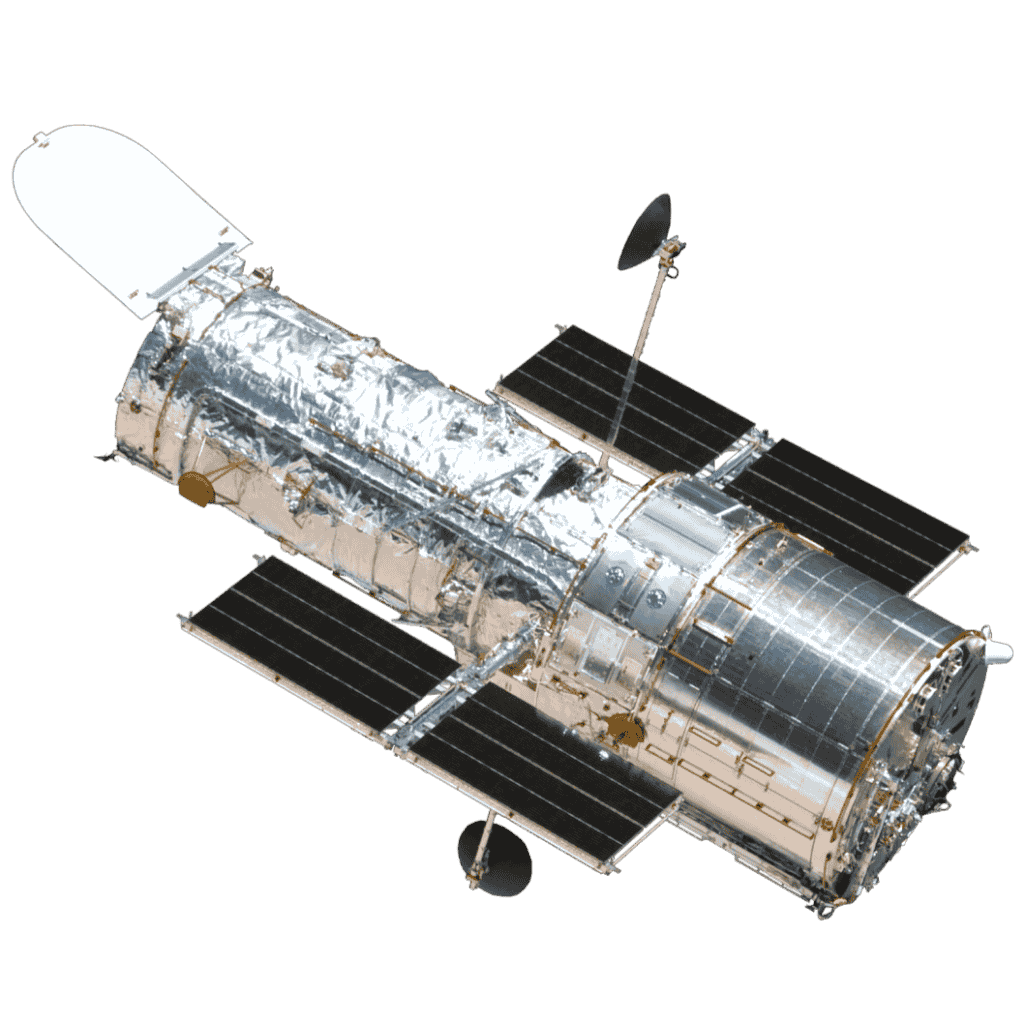The Hubble Space Telescope (HST), launched in April 1990, is a joint mission between NASA and the European Space Agency (ESA) and is one of the most iconic scientific instruments ever built. Orbiting approximately 559 kilometers above Earth, Hubble captures crisp, distortion-free images in ultraviolet, visible, and near-infrared light, enabling discoveries that have fundamentally reshaped modern astronomy.
Its 2.4-meter primary mirror, combined with highly sensitive imaging and spectroscopic instruments, gives astronomers a unique window into the cosmos—free from atmospheric interference. This has allowed Hubble to observe the faintest and most distant objects ever seen and to capture celestial phenomena with unparalleled clarity.
Key Discoveries and Impact
- Refining the Universe’s Expansion Rate: By observing Cepheid variable stars and Type Ia supernovae, Hubble has made precise measurements of the Hubble constant, helping determine the universe’s age and rate of expansion.
- Reaching into Deep Time: The Hubble Deep Field and Ultra Deep Field images unveiled thousands of galaxies billions of light-years away, providing a direct view of the early universe just a few hundred million years after the Big Bang.
- Revealing Dark Energy: Observations of distant supernovae led to the groundbreaking discovery of dark energy—a mysterious force driving the accelerated expansion of the universe.
- Studying Exoplanets and Stars: Hubble has imaged exoplanet atmospheres, detected signs of water vapor and clouds, and observed stellar birth and death, including breathtaking supernova explosions and glowing planetary nebulae.
Serviceability and Longevity
What makes Hubble unique among space telescopes is its serviceable design. Between 1993 and 2009, five Space Shuttle missions upgraded its instruments, repaired failed components, and dramatically extended its lifespan. These astronaut-led servicing missions transformed Hubble into a cutting-edge observatory that has remained scientifically productive for over three decades.
